
Sir William Henry Houldsworth (1834-1917), 1st Baronet, was born at Ardwick, Manchester, on the 20 Aug 1834 and he died on his Scottish estate at Kilmarnock on the 18 Apr 1917. He was the son of Henry Houldsworth and Helen Hamilton and he was baptised at St Thomas's Church, Ardwick Green, Manchester, on the 30 Dec 1834. He was their fourth son and he was educated at the University of St Andrews, Scotland. On completion of his education, he joined the family business as a partner.
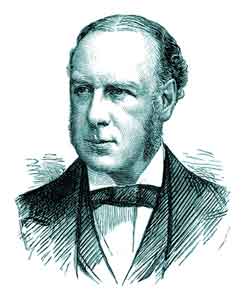
Sir William Henry Houldsworth.
In the early 1860s, he purchased land alongside the Stockport Branch of the Ashton Canal in Reddish, Stockport, where he built Reddish Mill, which was started in 1863 and completed in 1865. The architects were A H Stott & Sons of Oldham, founded in 1847 by Abraham Henthom Stott Sr. Four members of the Houldsworth family owned 60% of the shares in the newly formed Reddish Spinning Company, which was responsible for the construction of North Mill, started in 1870, and Middle Mill, started in 1874. Since the 1950s this complex of cotton spinning mills has been known as Houldsworth Mill. William Houldsworth was also responsible for building the Mechanics Institute and Library (now Houldsworth Working Men's Club), which was completed in 1874. The mill architect, Abraham Henthorn Stott Sr of Oldham, designed all these buildings.
He then commissioned the renowned architect, Alfred Waterhouse* RA RIBA (1830-1905) of Cross St, Manchester, to design St Elisabeth's Church, the adjoining rectory and a nearby school. A model village for the mill worker's was built close by the mills in a range of sizes to suit the status of the workers. Regrettably, some of these have been demolished but those on Houldsworth St and Liverpool St are still standing.
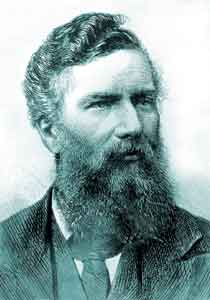
Alfred Waterhouse.
Between 1883 and 1906 William Houldsworth was the Conservative MP for the constituency of Manchester North West and in 1892 he was the government's delegate to the European Monetary Conference held in Brussels. His successor was Winston Churchill who was the MP for Manchester North West until 1908 as a member of the Liberal Party. William Houldsworth became a Baronet in 1887. He was a sometime chairman of the Fine Cotton Spinners' Association and he was awarded an Honorary Freeman of the City of Manchester in 1905. The Victoria University of Manchester awarded him an honorary LLD. He retired to live on his Scottish estate in 1906, after ceasing to be an MP. Following his death, a four-faced clock and drinking fountain was unveiled in Houldsworth Square, Reddish, on the 11 Sep 1920, paid for by public subscription.
The construction of St Elisabeth's Church was undertaken during 1881-1883, the work being paid for entirely by William Houldsworth. It was consecrated in 1883, being named after Houldsworth's wife, Elisabeth Graham Crum, and it is a high church (Anglo-Catholic) within the Church of England, reflecting Houldsworth's personal belief.
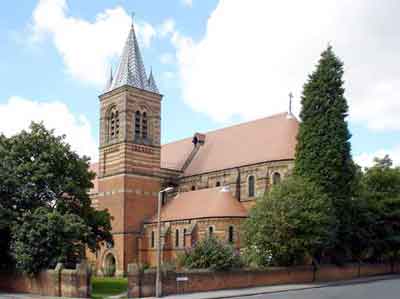
St Elisabeth's Church, Bedford St, Jul 2007.
This church is listed Grade I, List Entry No. 1356851.
The church was designed in the neo-Gothic style of architecture, the bricks being manufactured in nearby Openshaw and the stone used for the embellishment coming from Wrexham. Columns of polished granite, arranged along the nave, support the roof. The adjoining bell tower contains a peel of eight bells.
The church was built but a short distance away from the Stockport Branch Canal and the church records show that the granite columns were conveyed along the Ashton Canal and then the Stockport Branch Canal as far as Houldsworth Mill Wharf. Due to their substantial weight, the problem was how to transport the columns the short distance from the wharf to the church building site. The records show that the solution was to borrow elephants from Belle Vue Zoo in Gorton and to use these to draw the carts containing the columns.
St Elisabeth's Church is situated on Bedford St and it now lies within a conservation area. This area contains, Houldsworth and Broadstone Mills, the former Mechanics Institute and Library (Houldsworth Working Men's Club), mill worker's houses (formerly part of the model village) and a section of the derelict Stockport Branch Canal that includes mill wharfs, Grey Horse Wharf, Grey Horse Bridge and Grey Horse Hotel.
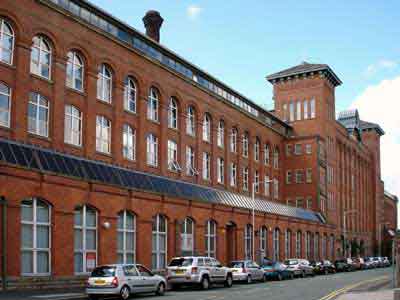 |
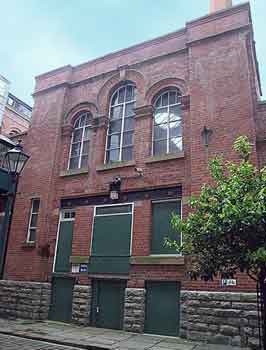 |
Houldsworth Mill, Houldsworth St, Jul 2007. It closed as a cotton spinning mill in 1958 and it is listed Grade II*, List Entry No. 1067171. |
Houldsworth Mill Engine House. |
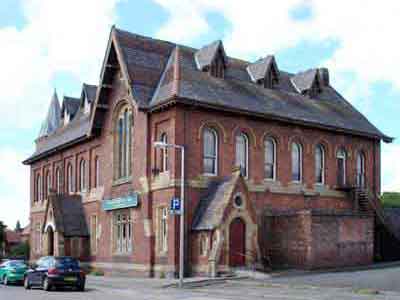 |
The former Mechanics Institute and Library, Leamington Rd, Jul 2007. Now a Working Men's Club, the building was briefly used as a church and school before purpose-built accommodation was provided. It opened on the 16 May 1874 and it is listed Grade II*, List Entry No. 1067173. |
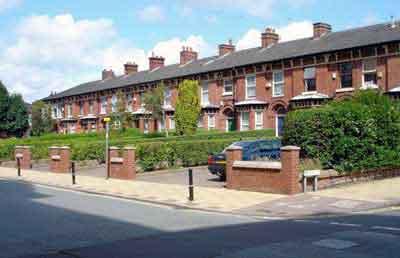 |
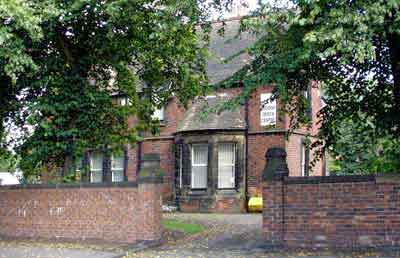 |
| Former mill worker's houses, Houldsworth St, Jul 2007. | The Rectory of St Elisabeth's Church, Liverpool St, Jul 2007. It is listed Grade II*, List Entry No. 1067181 and the wall to the west of the rectory is listed Grade II*, List Entry No. 1356853. |
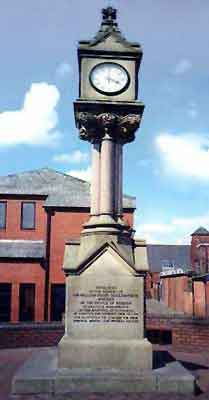 |
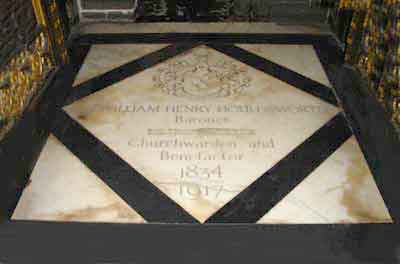 |
A commemorative four-faced clock and drinking fountain in Houldsworth Square, Jul 2007. This memorial to William Houldsworth is listed Grade II, List Entry No. 1162500. See below for further details and the inscription. |
A commemorative entrance floor to William Houldsworth at Manchester Cathedral, Jul 2007. See below for the inscription. |
Clock and Drinking Fountain
The memorial to William Houldsworth was designed and constructed by Messrs J & H Patterson of Manchester, the cost being met by public subscription.
It was unveiled on the 11 Sep 1920.
The memorial is made of sandstone with pink granite pillars supporting a clock having four faces. Three sides carry the dedication inscription, a bronze portrait plaque and a drinking fountain, respectively. The ground-level animal drinking troughs have been removed.
In 1986 it was moved to the centre of a raised brick-paved area with seating when Houldsworth Square was redesigned as part of a community programme.
The clock and Manchester Cathedral floor inscriptions are as follows: